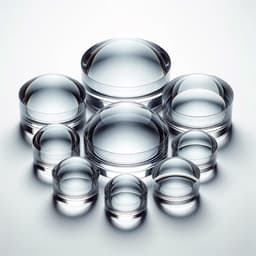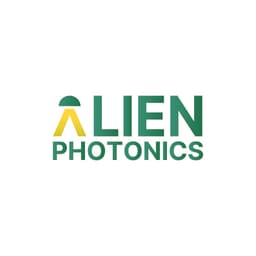


Aspherical Lenses (Aspheres)
Alien Photonics Aspheric Lens have non-spherical surface, which helps to correct various optical abberrations. Full customization including material, size, EFL, quality. Optional AR coatings.
Estimated Shipping Date: January 5, 2026 - January 19, 2026
* - Shopping cart pricing is based on the most recent pricing and it is NOT ORDERING, but requesting an official quotation which should typically reach You within 1-2 business days.
- Variants
- Description
- Applications
- Aberrations
Aspherical Lenses: description, main function and production
What is an Asphere (Aspherical Lens)?
Aspherical Lenses are optical components that are used to remove spherical aberration and feature a surface with radius of curvature that varies across the entire lens.
What is the main function and purpose of Aspheric Lenses?
Traditional spherical lens cannot efficiently collimate the light due to spherical aberrations (even at small incidence angles). For effective collimation you might need several optical components (multi-lens system). Asphere’s surface is designed and produced in such a way (not constant radius of curvature) that it removes spherical aberration.
How Aspheric Lenses (Asheres) are made?
Most common ways to produce apsheres are molding or CNC-based polishing. For many critical or high-power laser applications, the choice often leans towards CNC polished aspherical lenses due to their superior surface quality, thermal stability and other factors thate lead to beam consistency. However, molded lenses might find their place in applications where these factors are less critical, and cost or mass production is a primary concern.
Alien Photonics precision aspherical lenses are made using CNC glass polishing technology. Once design is confirmed, the blank glass material is polished using computer numerical control (CNC) glass polishing machines. After that (optionally) anti-reflective thin film coating is applied to reduce unwanted reflections. Next step is final testing and inspection, after that – aspherical lenses are stocked or shipped to Alien Photonics customers.
Aspherical Lenses for laser systems, medical devices, research and other applications
Alien Photonics aspherical lenses can be used in research, imaging, laser and other applications. Aspheres are also used in medical devices, displays and cameras.
Aspherical Lenses for laser systems
Aspherical lenses are commonly used in laser systems to collimate laser beams and focus the laser light to a small spot. They are used in the manufacture of laser pointers, laser cutting machines, and other laser-based applications. Alien Photonics aspheric lenses ensure the improved beam quality and beam stability compared to traditional spherical lenses (convex and concave), making them an essential component in laser systems.
Aspheres for medical devices
Aspheric lenses for medical devices, such as endoscopes, provide improved image quality and reduced distortion. Alien Photonics also offers other high quality lenses suitable for medical applications.
Scientific aspheric lenses
Alien Photonics aspheric lenses are often used in scientific instruments, such as spectrometers, to provide improved image quality and reduced distortion. Aspheres are also one of the key components in the astronomical telescopes, microscopes, and other scientific instruments. Further more, these lenses provide improved resolution and accuracy compared to traditional spherical lenses and are an essential component in many scientific instruments.
What aberrations can Aspherical Lenses (Aspheres) fix ?
Alien Photonics aspherical lens will be of help you to avoid specific types of aberrations. Please, check in the table bellow some ideas of how to do that.
| Aberration | What's wrong ? | How Alien Photonics Aspheres correct that ? |
|---|---|---|
| Spherical | Light from a point source is not focused to a single point, causing blur. | Focuses light rays to a single point, improving image clarity. |
| Coma | Off-axis light is focused into comet-shaped blobs rather than points. | Corrects coma across a wider field of view, enhancing sharpness and quality, especially at edges. |
| Astigmatism | Light from a single point is focused into lines at different locations, causing images to blur. | Ensures that light rays converge at a single point, improving focus and clarity of images. |
| Field Curvature | The image plane is curved, causing edges of the image to be out of focus. | Helps flatten the field, ensuring the entire image is in focus. |
| Distortion | Variation in magnification across the image field, causing images to warp. | Minimizes distortion, ideal for applications requiring precise geometry. |